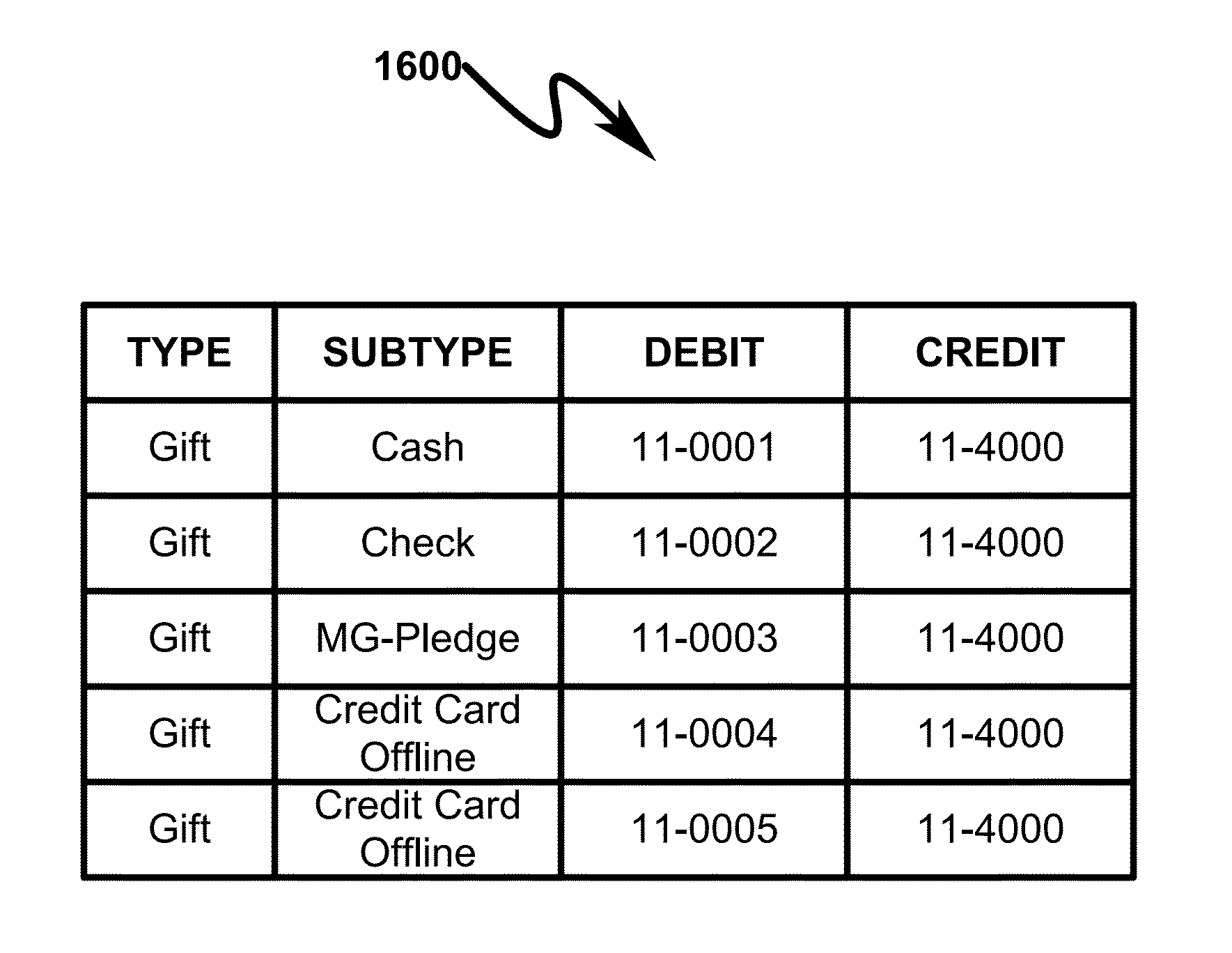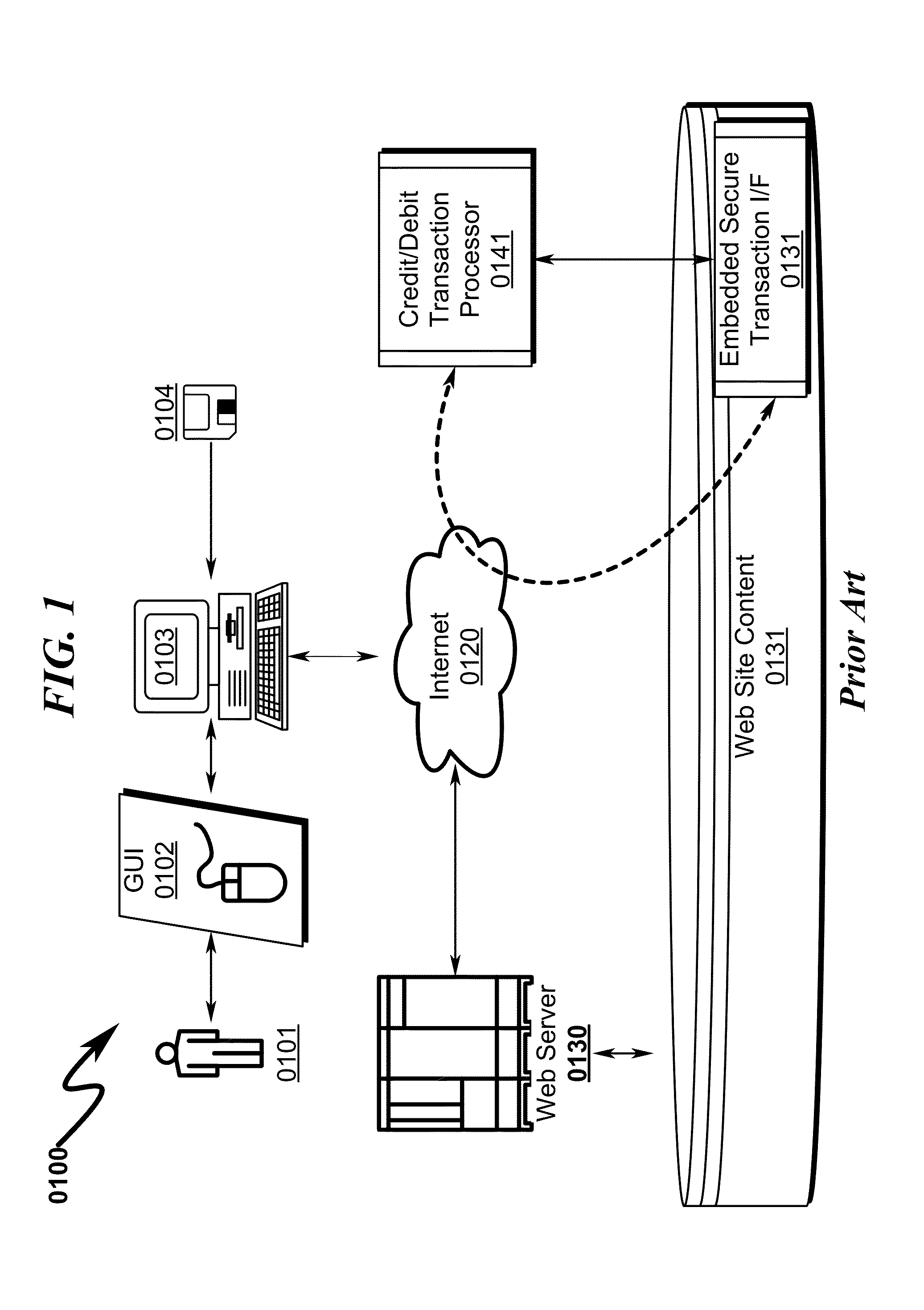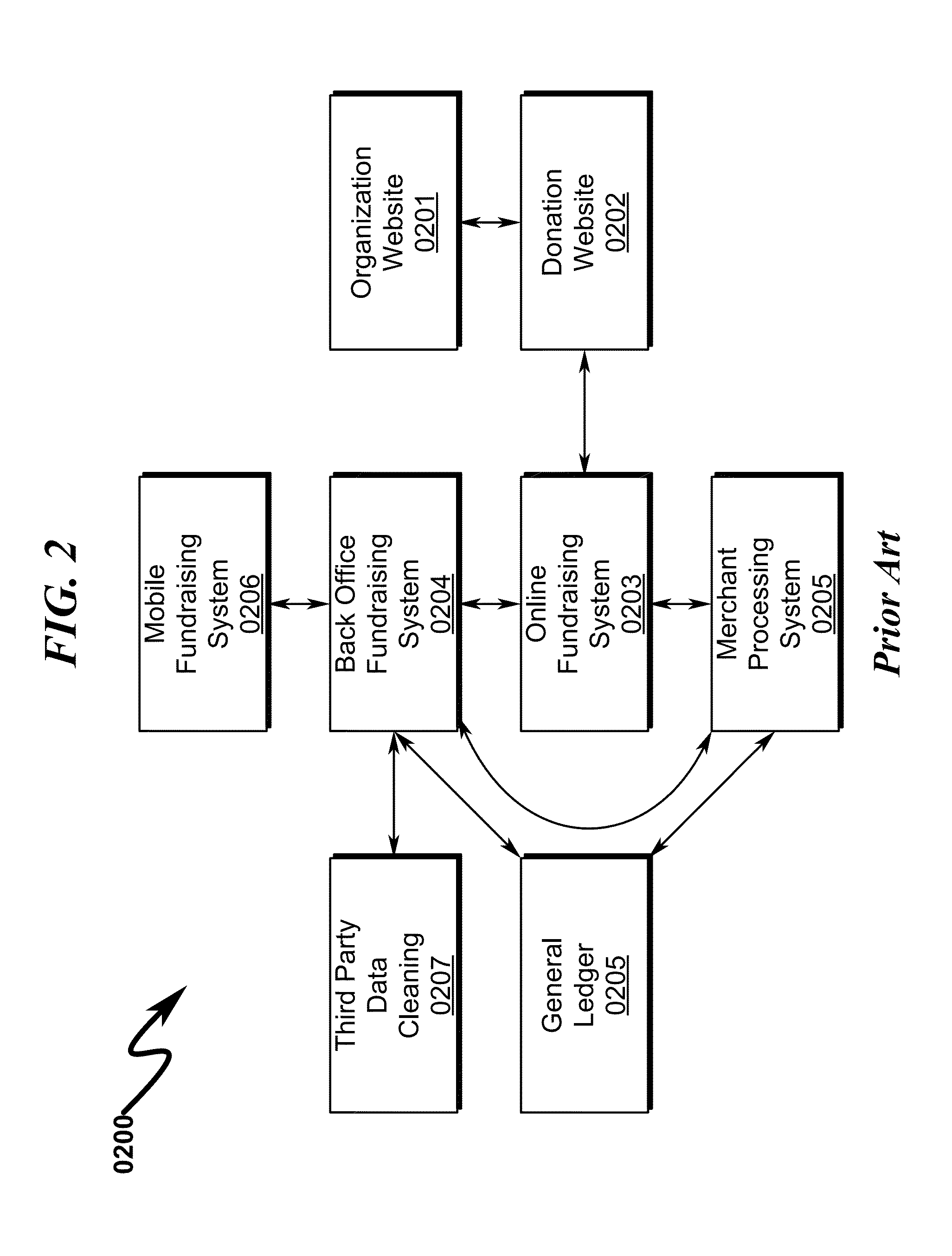However, these currently available systems have significant deterrents to fund raising and recruiting volunteers for all organizations that solicit help.
Generally these gifting systems involve a process that is overly
time consuming and complex.
Due to the complexity of the process or the amount of time it takes to complete the process, these systems present a significant deterrent to gifting.
This
system allows for the convenience of donating via a
mobile device but is limiting for the donor and the recipient of the donation.
The donor also has no way to review their consolidated tax-deductible gifts as they only receive a bill from their
mobile carrier that combines their donation with other non-tax-deductible mobile charges.
The recipient of the donation in this instance also has limited information about the donor who is interested in their cause, which limits their ability to engage them with future opportunities to donate their time and money.
For example a donor selects one project, fund or cause they are interested in donating to, then fill out a web form with personal data that is not only
time consuming but increases the security risk of transmitting personal information over the network.
For example a donor selects one project or cause they are interested in donating to, then when they checkout they are prompted to fill out cumbersome web forms with personal data that is not only
time consuming but increases the security risk of transmitting personal information over the network.
This gifting option is cumbersome in that it doesn't allow for multiple donations to be given at once like in a shopping
cart model and it also contains all of the
usability and security deficiencies of the shopping
cart model.
This process is difficult, manual and made more complex by the number of systems that are involved in the process.
When a user uses
OpenID their identity is only provided to their applicable
identity provider, so other websites never see their actual
password, minimizing the chances of their identity being compromised.
Typically this is the approach for smaller organizations as it does not provide an auditable set of financial statements.
The deficiency with this approach is that the contact information which provides key criteria in this process must be standardized to use it in comparison to other records.
While this process itself is fairly standard and could be done individual for a single address or in bulk for the entire set of addresses in the
system, the
standardization of the address after it has been stored or based on user choice to standardize it makes the address an unreliable method for identifying duplicates in the system.
As a result the address matching decision defined in (1903) is an inaccurate mechanism of comparison because it is not standardized.
The current prior art methodology requires a lot of effort on the part of the user of the gift
processing system to resolve the discrepancies that can exist between the multiple systems and reports to ensure correct and accurate financial reporting.
It also lacks any
third party ability to establish accountability for the proper recognition, and treatment of funds raised by the participants.
The prior art as detailed above suffers from the following deficiencies:
Payment information entered by donors is passed across the network for every instance of individual donations.The gift donor is required to enter
payment information upon every donation.Prior art systems generally require multiple steps to affect checkout completion by the donor.Prior art systems generally incur significant
time delays in the gift donor checkout cycle.Prior art systems generally require entering of
payment information upon every instance of checking out with shopping
cart.Prior art systems generally require an additional step of entering donation amount upon selecting a giving opportunity.Prior art systems generally require gift donors to enter
payment information upon making any changes or updates to items and amounts in the shopping cart.Prior art systems generally require the gift donor to submit their payment information over the network to the organization website.Many of the deficiencies in the prior art are a result of the integration of mobile, offline, online, merchant
processing, and financial systems and the reconciliation process required to keep all of the systems data synchronized.The prior art online systems are always separate
software servers with their own data stores that must be integrated with an offline solutionThe prior art online systems rely on manual translation of reports to the financial solution to reconcile
bank balances, and accurately reflect revenue and cash.The prior art online gift
processing systems require manual synchronization of designations to ensure that the giving made online is synchronized with the offline gift processing system.The prior art text-to-give mobile gift processing systems require manual synchronization of designations with text to give solutions.The prior art online gift processing systems require that marketing information and coding is duplicated between systems to ensure that giving data is correctly attributed to the marketing source of the gift.The prior art online gift processing systems typically will not allow users to edit their designation choices, amounts, payment methods for recurring gifts because the transfer of giving information is one directional from the gift processing system to the offline processing system.If the prior art online gift processing system allows for changes to information in the online giving processing system it is not synchronized with the offline gift processing system.The prior art method for importing profiles created via online or mobile giving requires manual intervention to verify whether or not a new profile is needed or is this profile a match for an existing profile because of deficient
duplicate detection logic.The prior art method for detecting individual duplicates in an offline giving solution relies on non-standardized data to match contact information such as addresses, phone numbers, and email addresses.The prior art method for defining general ledger accounts by gift type, and / or sub type for producing accurate information to update the general ledger requires large amounts of manual
data entry which is error prone.The prior art method for defining general ledger accounts by gift type, and / or sub type does not allow the organization to correctly reflect the logical design of their general ledger account structure.The prior art method for defining general ledger accounts does not allow the mapping from designations, payment methods, departments, fund restriction, or other pieces of account segment data to be mapped logically to data in the offline giving solution.The prior art method of processing
credit card payments and ACH payments does not allow for the correct reflection of fees and deposits to facilitate accurate
bank reconciliation or financial statements.The prior art method of setting up a joint fundraising program is manual and lacks a method of controls to ensure each participant meets their obligations.The prior art method of distributing proceeds from a joint fundraising program is a manual process that requires each organization to honestly account for and report the proceeds they received during the joint fundraising program.
While some of the prior art may teach some solutions to several of these problems, the core issues of reducing the cost and increasing the convenience and security within gift
transaction processing systems have not been addressed by the prior art.
 Login to View More
Login to View More  Login to View More
Login to View More 


